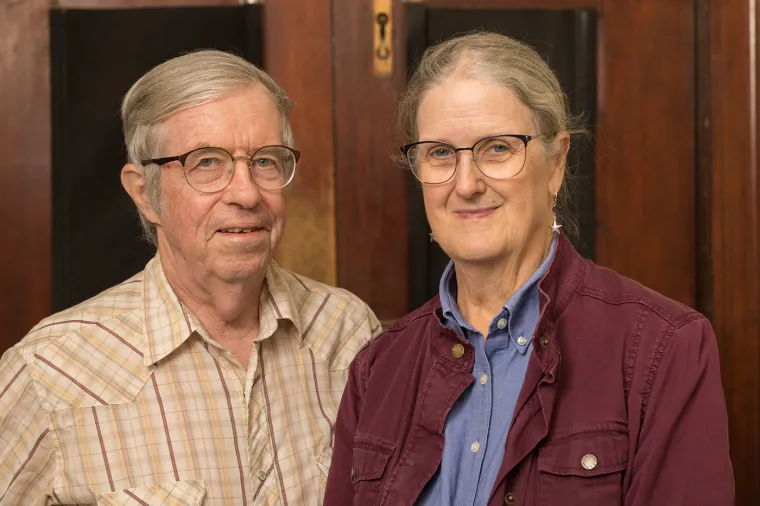The People
Meet the people who played pivotal roles in the founding and flourishing of infrared astronomy. Thanks to their work, the University of Arizona has emerged as the leader in infrared astronomy over the last 50 years.
The University of Arizona is the only university to have participated in four major NASA infrared astronomy space projects including the Infrared Astronomical Satellite, Spitzer, Hubble and now Webb. It's also the only university that has contributed to the last two. All this work culminates in the launch and operation of Webb, which will serve as the telescope for the next generation. Learn more about the Webb scientists.
Marcia Rieke
PI Near Infrared Camera NIRCam
Marcia Rieke is a Regents Professor of Astronomy at the University of Arizona. Her research interests include infrared observations of the center of the Milky Way and of other galactic nuclei and observation of the infrared sky at as faint a level as possible to study distant galaxies. These research interests have driven her to characterize and develop large-format, low-noise infrared detector arrays. She received her undergraduate and graduate degrees in physics from the Massachusetts Institute of Technology. She came to the University of Arizona in 1976 as a postdoctoral fellow and has been there ever since. She has served as the Deputy Principal Investigator on NICMOS, (the Near Infrared Camera and Multi-Object Spectrometer for the Hubble Space Telescope), the Outreach Coordinator for the Spitzer Space Telescope, and now is the Principal Investigator for the near-infrared camera (NIRCam) for the James Webb Space Telescope. She also has been active in using Arizona’s groundbased telescopes. She served at the Vice Chair for Program Prioritization for Astro2010, a decadal survey of astronomy and astrophysics and was the chair of the Electromagnetic Observations from Space Panel 1 for the 2020 decadal survey. She was elected to the National Academy of Sciences in 2012.
George Rieke
Science Team Lead Mid-Infrared Instrument MIRI
George Rieke is Regents Professor of Astronomy and Planetary Sciences at the University of Arizona. He switched from a Ph.D. thesis on very high energy gamma rays to a postdoctoral position in infrared astronomy just in time to enjoy the growth of the latter from primitive beginnings with less than a dozen practitioners to its current status as a major branch of astronomy. This growth will culminate with the launch of JWST and the participation of the worldwide astronomical community in the results from it. Rieke has been co-author of more than 500 scientific publications, and also has written three books: “The Last of the Great Observatories” (which received a starred review from Publishers Weekly), “Measuring the Universe” (recipient of the Chambliss Astronomical Writing Award, and “The Detection of Light” (now in a third edition). He is a member of the American Academy of Arts and Science and of the National Academy of Science, and in 2006 he received the Koffler Prize for creative scholarship at the University of Arizona.

Marcia and George Rieke. Marcia Rieke is a UArizona Regents Professor of Astronomy and principal investigator on the telescope’s Near Infrared Camera Instrument, or NIRCam. Her husband, George Rieke is also a Regents Professor of Astronomy and co-principal investigator and co-team leader on the telescope's Mid-Infrared Instrument, or MIRI, team. The Riekes played pivotal roles in the founding of the field of infrared astronomy.
Media Contacts & Information
Daniel Stolte
Science Writer, University Communications
520-626-4402
stolte@arizona.edu
Mikayla Mace Kelley
Science Writer, University Communications
520-621-1878
mikaylamace@arizona.edu

